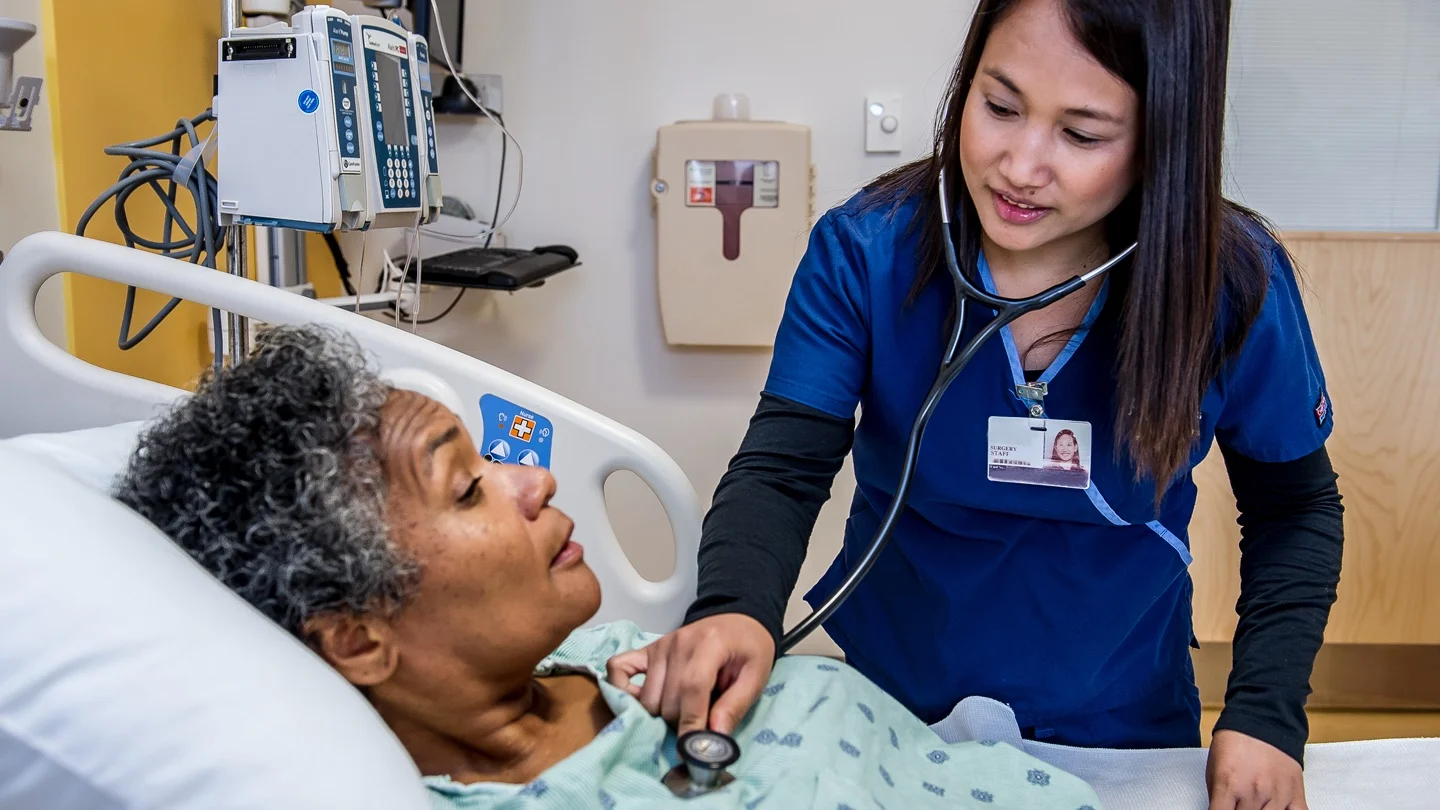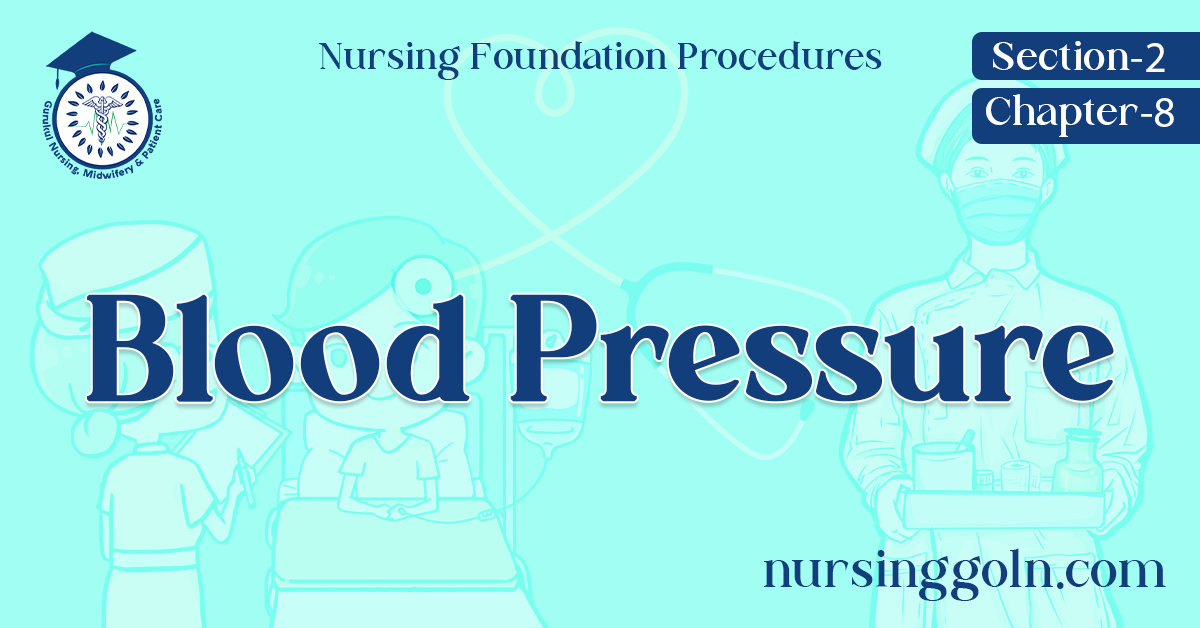Today our topic of discussion is blood pressure.
Blood Pressure

BLOOD PRESSURE
Blood pressure is the pressure blood exerts against the walls of the vessels in which it is contained. Blood pressure may be defined as the force exerted by blood against the walls of the vessels in which it is contained.
Differences in blood pressure between different areas of the circulation provide the driving force that keeps the blood moving through the body (Fig. 8.15). Parts of BP machine are shown in Figure 8.16.
Purpose
- To obtain baseline date for diagnosis and treatment.
- To compare with subsequent changes that may occur during care of patient.
- To assist in evaluating status of patients blood volume. Cardiac output and vascular system.
- To evaluate patients response to change in physical condition as a result of treatment with fluids or medications.
Indication
- To determine baseline, blood pressure recording and monitor fluctuation.
- To aid in the diagnostic disease.
- To aid in the assessment of cardiovascular system.
Types of Pressure
- Systolic pressure: It is the highest degree of pressure exerted by the blood against the arterial wall as the left ventricle contracts and forces the blood from it into the aorta
- Diastolic pressure: It is the lowest degree if pressure when the heart is in its resting period just before contraction of the left ventricle
- Pulse pressure: It is the difference between systolic and diastolic-pressure for the health, adult is usually about 120/180 (systolic pressure 12 mm Hg and diastolic pressure 80 mm Hg with pulse pressure of 40 mm Hg)
- Normal venous pressure on an average person in a recumbent position is 40 to 110 mm of water. Venous pressure is a valuable index in determining the efficiency of heart muscles.

Scientific Principles
- Exercise, emotion, anxiety, fear, tension and worry cause a temporary rise in blood pressure
- The brachial artery in the antecubital area which is convenient place for taking BP
- A noisy environment and parallax error interfere with correct reading on manometer
- A twisted cuff may produce unequal pressure and can cause inaccurate reading
- Accurate reading is possible only when the stethoscope is directly over the artery
- Airtight system of cuff and tubing facilitates accurate reading
- Sufficient pressure in the cuff obliterates the flow of blood through the brachial artery.
Factors Influencing Blood Pressure
- Age: Adult’s blood pressure tends to increase with advancing age. The older adult’s blood pressure is 140-160/80-90 mm Hg
- Stress: Anxiety, fear, pain and emotional stress increases blood pressure
- Medication: Narcotic and analgesics lower blood pressure
- Diurnal variation: It is lowest in early morning and higher in late evening
- Sex: In men, it is higher than in female Exercise: It will increase blood pressure
- Bleeding: It causes low blood pressure.
Preliminary Assessment
- Identify the patient Check the diagnosis, reason for taking BP schedule frequency of obtaining blood pressure
- Previous measurement and range of blood-pressure Physical and mental state of the patient. Avoid blood-pressure taking, on a patient who is angry, anxious or in pain or a crying child
- Assess the arm on which the blood-pressure can be taken. Do not take blood-pressure reading on a patient’s arm if:
- The arm has an intravenous infusion on it The arm is injured or diseased
- The arm has a shunt or fistula for the renal dialysis On the same side of the body where a female patient had a radical mastectomy.
Preparation of the Article
- Sphygmomanometer
- Stethoscope
- Piece of paper.

Preparation of the Patient
- Explain the procedure to the patient to gain the confidence and cooperation of the patient
- Place the patient in a comfortable position either lying down with the arm resting on the bed or sitting with the arm supported on the table at heart level to ensure accurate reading
- Patient should be resting at least 5 to 10 minutes prior to taking blood-pressure.
- Measurement of BP is shown technique in Figure 8.17.
Read more:
